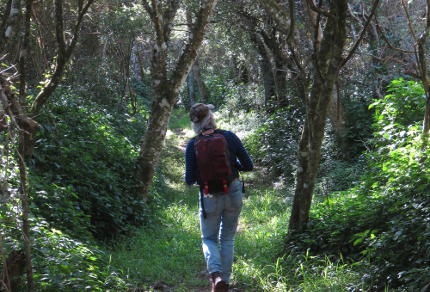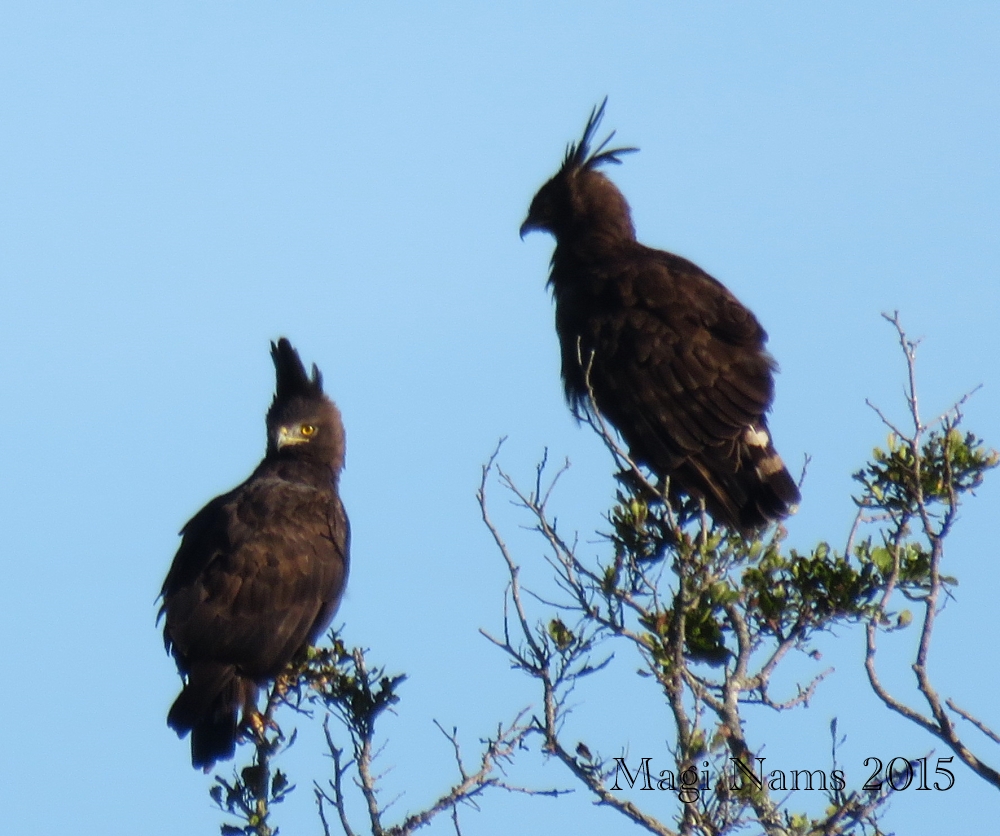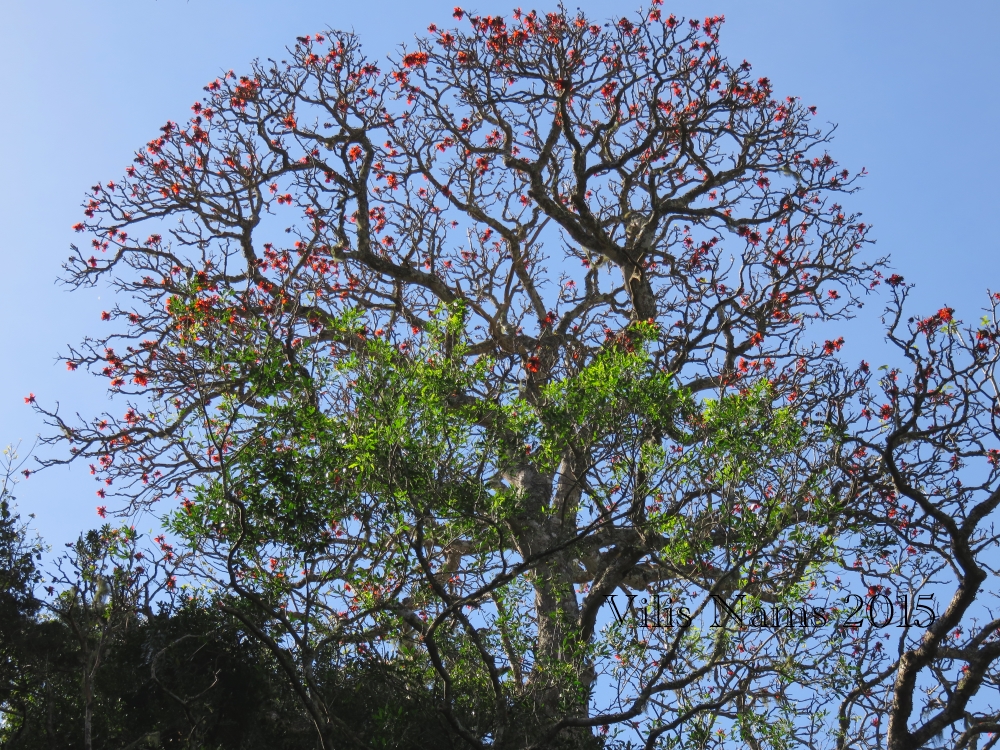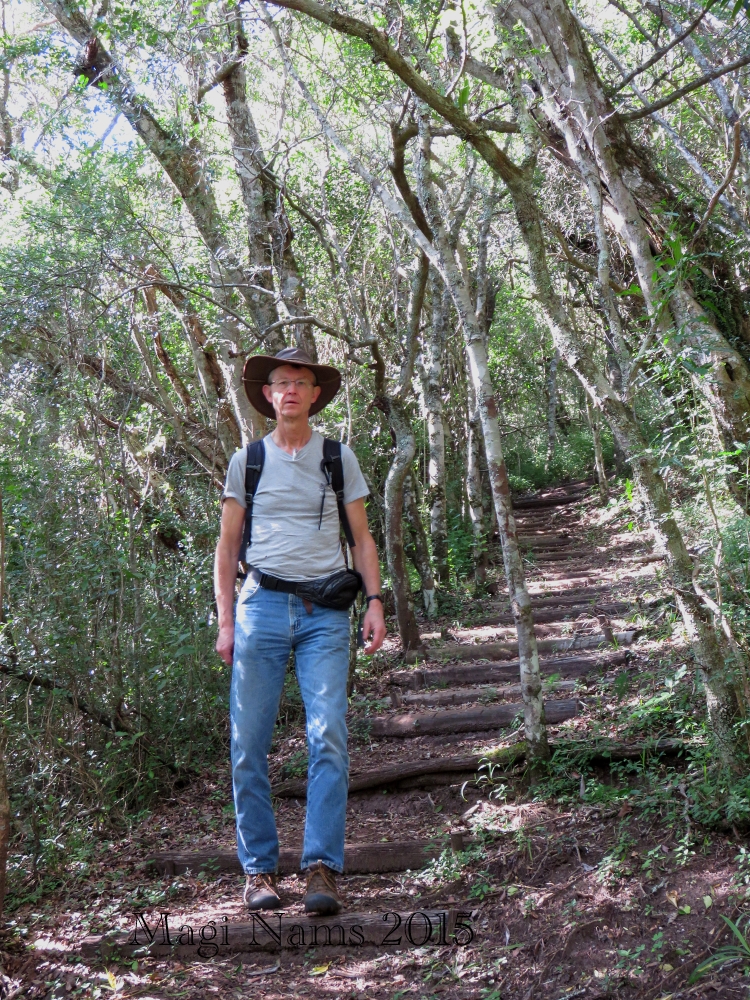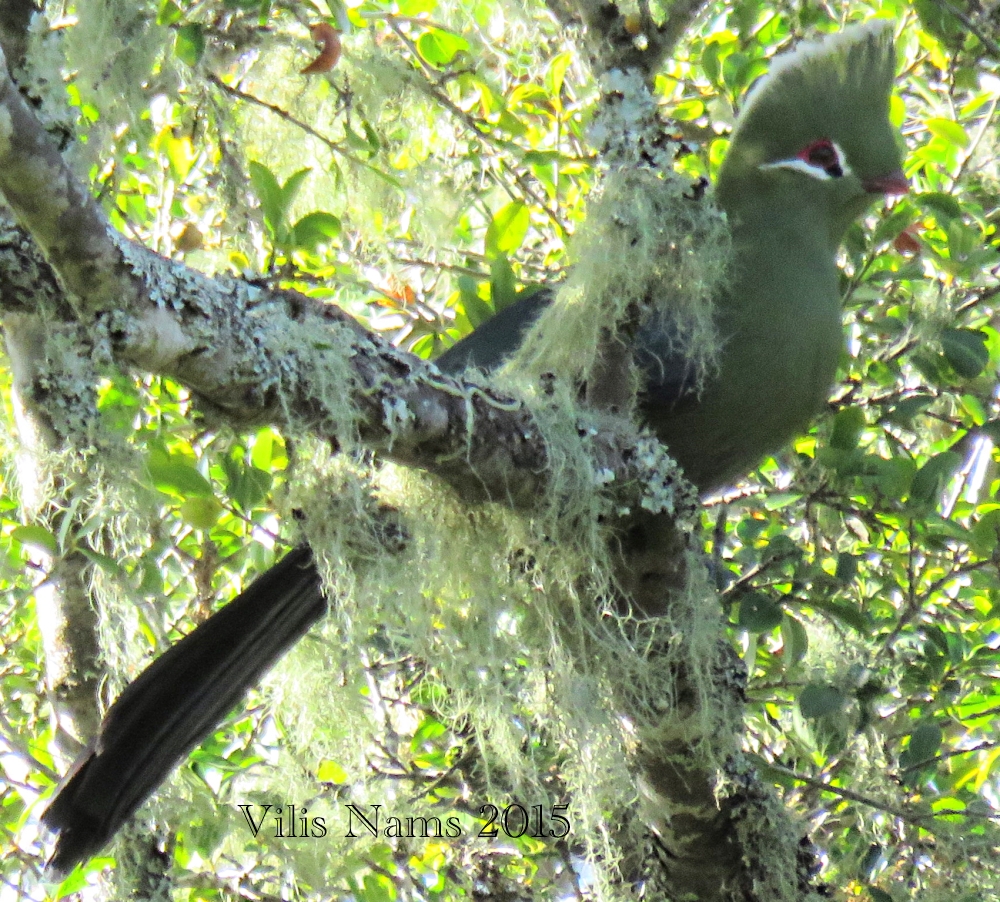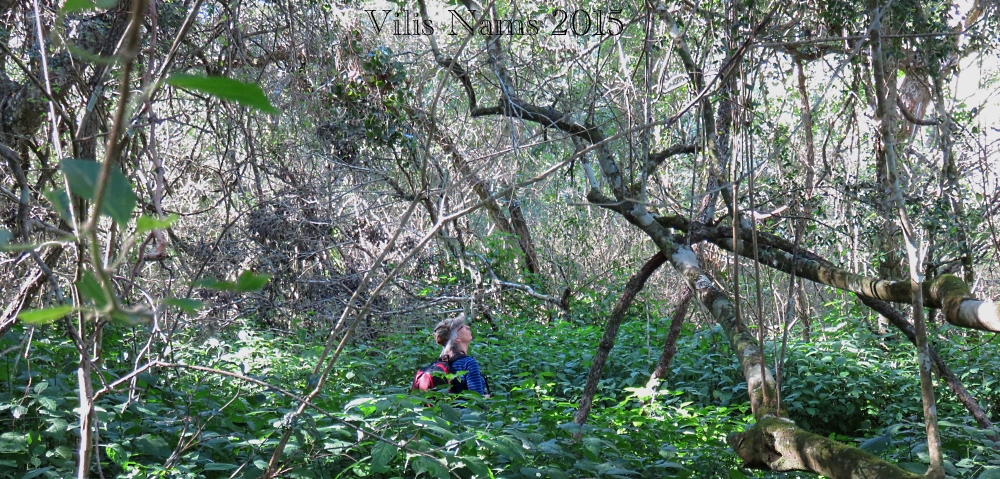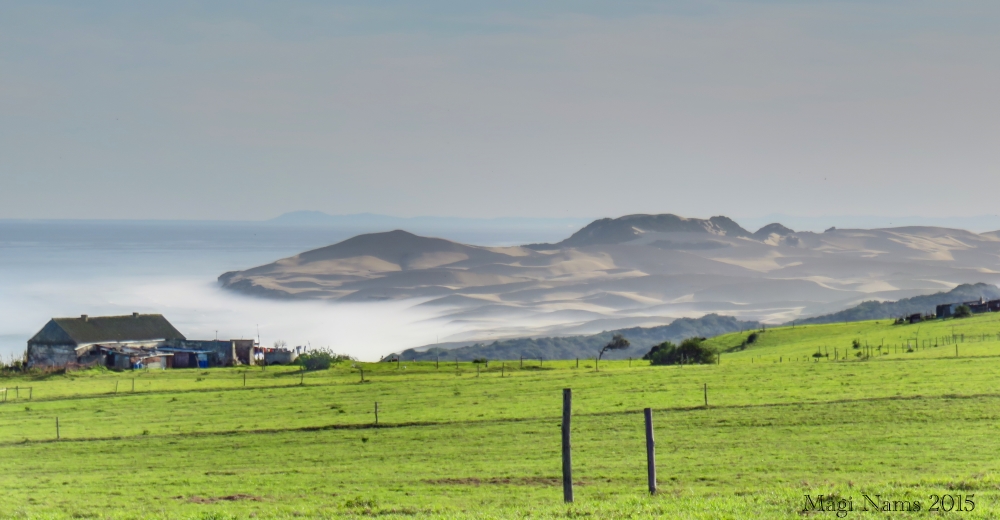Hiking Tree Dassie Trail, Addo Elephant National Park, took us through an indigenous coastal rainforest and offered sightings of forest birds, such as Cape batis, chorister robin-chat, black-backed puffback and dark-backed weaver.
On Sunday, August 2, Vilis and I drove south from Grahamstown to the pretty coastal town of Kenton-on-Sea at the broad mouth of the Boesmans River and then west to Alexandria and our hiking destination for the day – Tree Dassie Trail, Addo Elephant National Park. En route to Kenton-on-Sea, we spotted vervet monkeys crossing R343, zebras grazing in a reserve and a pair of long-crested eagles basking atop a tree in brilliant morning sunshine. We left the dry hills and rangeland surrounding Grahamstown behind and drove through a lush landscape of vivid green fields and rich pastures grazed by dairy and beef cattle. It was like entering a completely different world. (Tap on photos to enlarge.)
After reaching the Cape Woody Section of Addo Elephant National Park, we collected a trail map and headed off on Tree Dassie Trail, a 7-kilometre path through regenerating and mature coastal rainforest. The trail was named after the tree dassies that inhabit the forest. These are plump, furry mammals that resemble the rock dassies we’ve seen in Grahamstown’s Makana Botanical Gardens but live in trees and are active at night.
Known as Alexandria Forest, the forest is a strip of indigenous woodland bordering the Alexandria Dunefield, one of the world’s largest areas of actively moving sand dunes. Most of the original Alexandria Forest was cut to create farmland, now devoted to dairy farms and pineapple and chicory production.
After spending hours under the bald sun on open veld whipped by cold wind while birding in a Coordinated Avifaunal Roadcount the previous day, it was a pleasure to enter the forest. The first section of trail was a wide grassy path bordered by tangles of shrubs and low trees. In places, the trail became a tunnel through the vegetation. African dusky flycatchers hawked for insects. Collared sunbirds’ iridescent plumage flashed in the sunlight. Amethyst sunbirds and grey sunbirds foraged for nectar in scattered coral trees that towered over the understory. The trees’ fallen petals lay like curved flames on the path.
Gradually the upper forest filled in, with more tall trees punching through the canopy of understory trees and shrubs. We hiked up a steep slope, followed a ridge top and then descended the ridge into climax Alexandria Forest. Crustose and foliose lichens adorned tree trunks, as did mosses, creating rich patterns of light and dark. Old Man’s Beard lichen resembled wispy, pale green tinsel dangling from the twigs and branches of massive trees. Vines of lianas (woody climbing plants) formed tangled curtains. Thick beds of a broad-leaved plant resembling North America’s jewelweed bordered the path. The fascinating clutter of vegetation made it difficult to see and photograph birds. The forest, with its quirky knobwood trees and entangled vines, could have belonged to a fantasy world.
We heard Knysna’s turacoes’ growling vocalizations and saw three of the spectacular green-and-blue-and-red forest birds bounding along branches. I identified a Cape batis, a chorister robin-chat, a black-backed puffback and two dark-backed weavers in thick vegetation alongside the path. We also caught glimpses of other birds I couldn’t see well enough to identify. A dark-backed weaver nest hung from a thin twig in mid-air, its long entrance tunnel obvious. A brown scrub-robin kicked up dead leaves on the forest floor.
We saw many tiny cloven hoofprints, which might have been made by blue duiker, southern Africa’s smallest antelope. We also walked by what we thought were bushpig rootings and droppings. As we neared the end of our hike, we spotted a male bushbuck in thick vegetation near peaceful Langebos Huts, the trailhead for the two-day Alexandria Trail through the coastal forest and dunefield.
Outside the park, we were again immersed in the lush agricultural land that lay like a jewel on the verge of the Indian Ocean. Our day trip of hiking Tree Dassie Trail, Addo Elephant National Park, had granted us new views of Eastern Cape landscapes and a delightful outing in lush coastal rainforest. The icing on the cake was four new bird species added to my life list. Well done, Tree Dassie Trail!
My bird sightings: Hadeda ibis, speckled pigeon, red-winged starling, European starling, fork-tailed drongo, Egyptian goose, *long-crested eagle, Cape glossy starling, reed cormorant, black harrier, black-headed oriole, amethyst sunbird, grey sunbird, jackal buzzard, African dusky flycatcher, collared sunbird, chorister robin-chat, Knysna turaco, *Cape batis, greater double-collared sunbird, black-backed puffback, *dark-backed weaver, *brown scrub-robin, southern boubou, sacred ibis, blacksmith lapwing, black-headed heron, common fiscal, bokmakierie, little grebe (dabchick).
My mammal sightings: vervet monkey, bushbuck.

